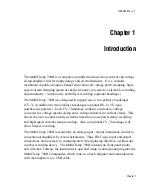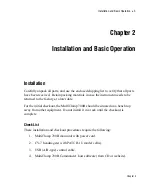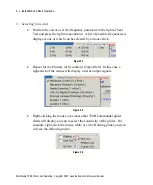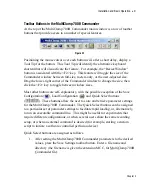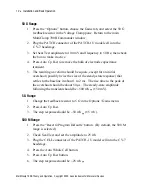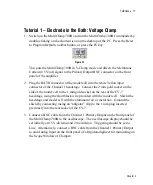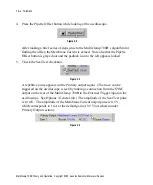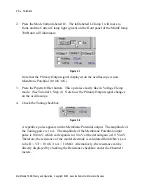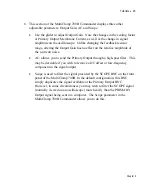
10
•
Installation and Basic Operation
2. Press the Options toolbar button (
) and then press the Quick Select tab.
Click in the name field for the Quick Select Button you wish to assign (1
through 3). Then use the Browse button to choose the name of the MCC
file containing the desired parameter settings. (
Note
: if any executable file
other than a MultiClamp configuration file is chosen for this button
assignment, then that executable command will be run when this button is
clicked.)
3. Back in the main MultiClamp 700B Commander panel, positioning the
mouse over the assigned Quick Select button now displays the name of the
assigned MCC file. Press the Quick Select button to load the parameter
settings. Alternatively, the Load Configuration button (
) can be pressed
to load any previously stored MCC file.
Test the Noise
All electronic equipment generates some amount of thermal noise. Follow these
steps to measure the intrinsic MultiClamp 700B current noise (“Irms”, or the root-
mean-square of the current noise):
1. Leave the CV-7 headstage in an “open circuit” configuration (
i.e.
, nothing
should be attached to the input of the CV-7).
2. To reduce extraneous noise, the CV-7 must be shielded. This can be
accomplished using aluminum foil, which should be
loosely
but
completely
wrapped around the headstage. A great alternative to foil shielding is a
metal container, such as a coffee can. Most importantly, the input of the
CV-7 should not make contact with the shield.
3. The shield must now be grounded to the CV-7. Connect the small, black
grounding wire provided with your MultiClamp hardware to the gold,
1 mm input at the rear of the headstage case. Connect the other end of the
ground wire to the foil or metal container using an “alligator” clip or other
appropriate connection.
MultiClamp 700B Theory and Operation, Copyright 2005 Axon Instruments / Molecular Devices






